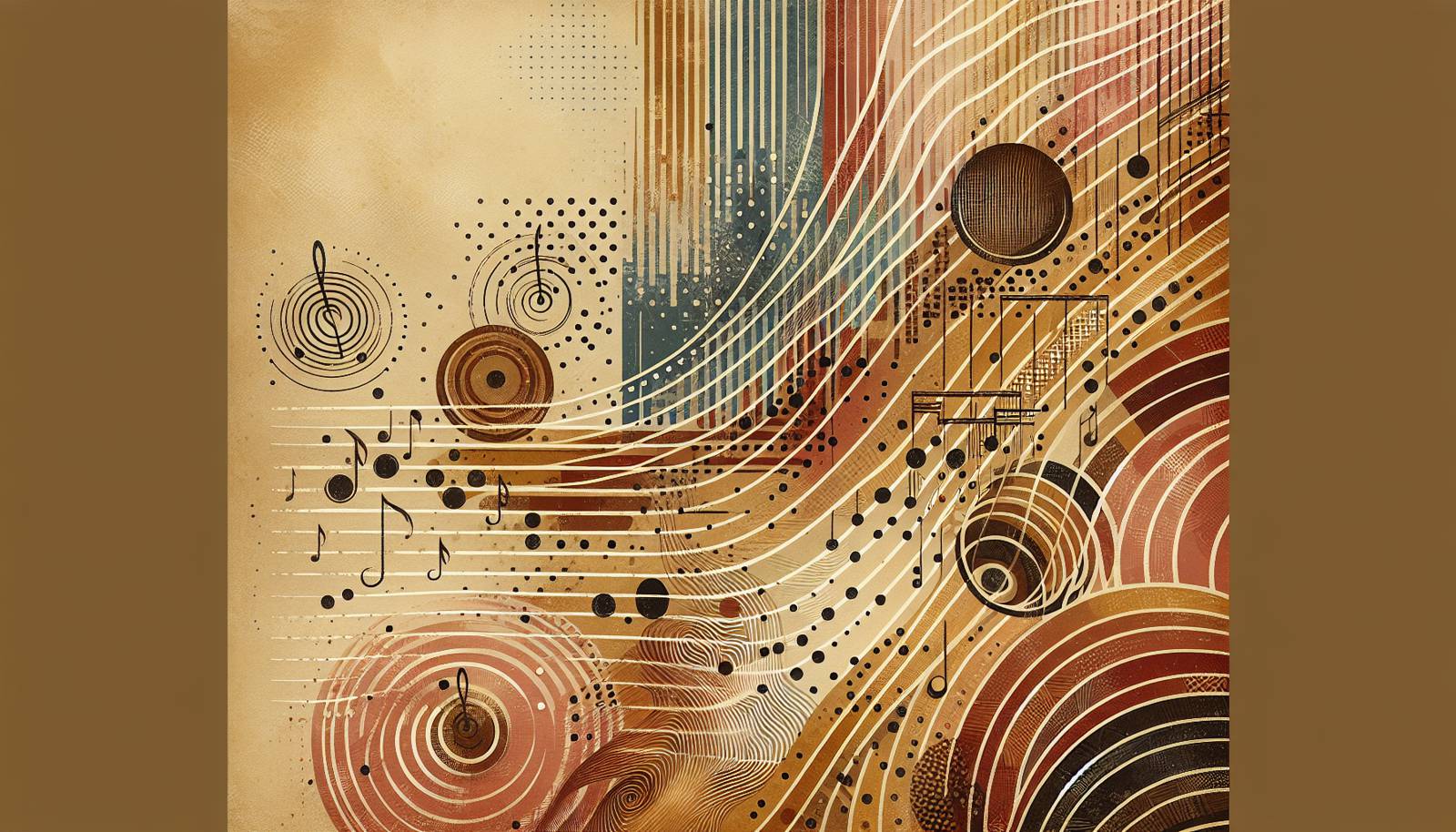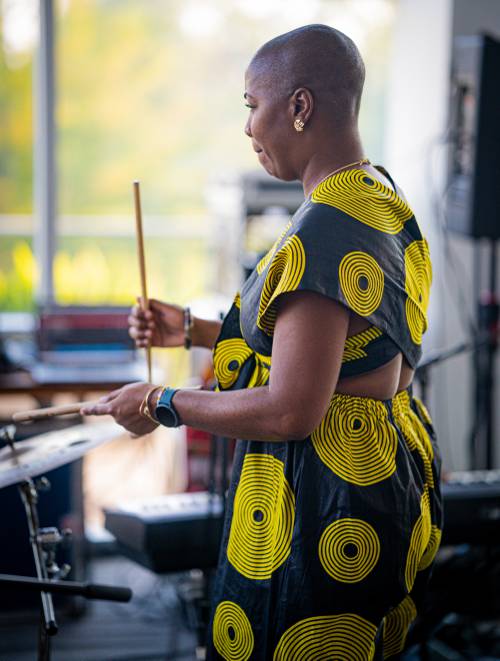
FAQ About The Influence of Afro-Cuban Music on Global Rhythms

What are the main characteristics of Afro-Cuban music?
Afro-Cuban music is characterized by its rich rhythmic complexity, blending African musical elements with Cuban cultural influences. Key characteristics include the use of polyrhythms, syncopation, and the integration of percussion instruments such as congas, bongos, and timbales. Vocal elements often feature call-and-response patterns, and the music typically incorporates a variety of dance styles, reflecting its origins in both sacred and secular traditions.

How did Afro-Cuban music influence jazz?
Afro-Cuban music had a significant impact on jazz, particularly starting in the mid-20th century. Musicians like Dizzy Gillespie and Chano Pozo collaborated to blend Cuban rhythms with jazz elements, giving birth to Afro-Cuban jazz or Latin jazz. This genre maintains the improvisational aspects of jazz while incorporating the complex, layered rhythms typical of Afro-Cuban music. The use of percussion instruments and the introduction of Afro-Cuban musical structures, such as clave patterns, became foundational in many jazz compositions.

What is the historical origin of Afro-Cuban music?
Afro-Cuban music originated from the African slaves brought to Cuba during the transatlantic slave trade from the 16th to the late 19th centuries. These Africans, primarily of Yoruba, Congolese, and Dahomeyan descent, brought with them rich musical traditions, which over time fused with Spanish musical forms and indigenous influences in Cuba. This cultural amalgamation led to the development of various Afro-Cuban music genres, including rumba, son, and mambo.

What role does the clave play in Afro-Cuban music?
The clave is a fundamental rhythmic pattern in Afro-Cuban music that serves as the backbone of many styles within the genre. It typically consists of a two-bar rhythmic phrase used as a structural and organizing element. The most common forms are the son clave and the rumba clave. This pattern is crucial to the timing and structure of the music, guiding the percussionists and other musicians in maintaining rhythmic consistency. It is so integral that it defines the form and feel of many Afro-Cuban and Latin music styles.

In what ways has Afro-Cuban music influenced salsa?
Afro-Cuban music heavily influenced salsa, which emerged in the mid-20th century, particularly in New York City. Salsa combines elements of traditional Afro-Cuban rhythms such as son, mambo, and rumba with other Latin music forms and modern jazz. Key components like the clave rhythm, prominent use of percussion instruments, and the montuno section (a repeated piano pattern) all derive from Afro-Cuban musical traditions. Thus, salsa music is essentially a contemporary reflection of Afro-Cuban musical roots.

What instruments are commonly used in Afro-Cuban music?
Common instruments in Afro-Cuban music include various types of percussion such as congas, bongos, timbales, and claves. Other instruments include the piano, which often plays montuno patterns, and brass instruments like trumpets and trombones, which add melodic and harmonic richness. String instruments such as the string bass and the tres, a Cuban guitar with three pairs of strings, are also typical. Vocals are an integral part, often engaging in call-and-response patterns quintessential to many Afro-Cuban music styles.

How has Afro-Cuban music impacted contemporary music?
Afro-Cuban music has significantly impacted contemporary music across various genres. Its complex rhythms have been incorporated into jazz, pop, hip-hop, and even electronic music. The global appeal of rhythms like salsa and cha-cha-cha, both derived from Afro-Cuban roots, shows how these influences permeate contemporary dance music. Modern artists often borrow elements of Afro-Cuban percussion and rhythm, making them a staple in producing rhythmic diversity in today's music.

What is the relationship between Afro-Cuban music and dance?
Afro-Cuban music and dance are inextricably linked, with dance being a vital expression of the musical rhythms and cultural narratives. Traditional dances such as rumba, mambo, and guaguancó are performed to Afro-Cuban music and reflect its rhythmic intricacies. Dance movements are often improvisational, echoing the improvisational nature of the music itself. The dynamic interaction between musicians and dancers enhances both the performance and cultural significance of Afro-Cuban music.

How did Afro-Cuban music spread globally?
The global spread of Afro-Cuban music can be attributed to several factors, including migration, the recording industry, and influential collaborations. In the early 20th century, Cuban musicians traveled to cities like New York and Havana became a hub for musicians worldwide. The rise of the music recording industry and radio broadcasting helped disseminate Afro-Cuban sounds internationally. Collaborations between Cuban and American jazz musicians also played a pivotal role in bringing Afro-Cuban rhythms into the broader global musical landscape.

What are some popular Afro-Cuban music genres?
Popular Afro-Cuban music genres include son, rumba, mambo, cha-cha-cha, and guajira. Each of these genres has distinct characteristics but shares common elements of African and Cuban roots. Son combines Spanish canción and guitar with African rhythms and percussion. Rumba is distinctly African, with powerful percussive rhythms and dance. Mambo and cha-cha-cha are modern dance music forms that have enjoyed broad appeal, especially in the mid-20th century. Guajira is a style of Cuban country music with syncopated rhythms.

What is the difference between Afro-Cuban and Cuban music?
Cuban music is a broad categorization that includes a variety of musical styles originating from Cuba, influenced by Spanish, African, and indigenous sounds. Afro-Cuban music specifically refers to those genres that stem from the African influences within Cuban music, focusing on percussive elements and African-rooted rhythms and melodies. While all Afro-Cuban music is Cuban, not all Cuban music is considered Afro-Cuban since it can include other styles like danzón or Cuban son without pronounced African rhythmic elements.

Who are some influential artists in Afro-Cuban music history?
Influential artists in Afro-Cuban music include Chano Pozo, a pioneer in Afro-Cuban jazz, and Arsenio Rodríguez, known for his innovations in using African rhythms in Cuban music. Celia Cruz, "The Queen of Salsa," brought Afro-Cuban music to international stages with her powerful vocals. Other notable figures include Machito, who contributed significantly to Afro-Cuban jazz, and Mongo Santamaría, who popularized the clave rhythm in North America. These artists played key roles in bringing Afro-Cuban music to a global audience.

Can Afro-Cuban music be found in film soundtracks?
Yes, Afro-Cuban music is often featured in film soundtracks to evoke cultural atmosphere and dynamic rhythm. Its distinctive percussive elements and exciting tempos make it ideal for many settings within films, particularly those portraying Havana's nightlife or dance scenes in general. This style of music can also provide a lively background score, enhancing the overall ambiance and emotional impact of visual storytelling.

What's the role of spirituality in Afro-Cuban music?
Spirituality plays a significant role in Afro-Cuban music, especially in genres that draw from African religious traditions like Santería and Palo. The music often serves a dual purpose, both as entertainment and as a spiritual practice. Ritual drumming, chanting, and singing are central to religious ceremonies, where music is used to invoke spirits, honor ancestors, and facilitate communal bonding. These spiritual elements have also influenced secular Afro-Cuban music, enriching its cultural depth and significance.

How does son fit into the Afro-Cuban music scene?
Son is a foundational genre in Afro-Cuban music, combining Spanish lyrical and instrumental elements with African-derived rhythms and instruments. It first emerged in Cuba's rural eastern areas and became popular nationwide in the early 20th century. Son serves as a precursor to many other Afro-Cuban and Latin music styles, including salsa. It features a distinctive structure that alternates between verse and a repetitive refrain, typically performed with instruments like the tres, maracas, and bongo drums.

What impact did Afro-Cuban music have on American popular music?
Afro-Cuban music has had a substantial impact on American popular music, particularly through the introduction of Latin jazz and salsa. Artists in the United States incorporated Afro-Cuban rhythms, instruments, and musical forms, which contributed to the richness and diversity of the American music scene. Genres like rock, hip-hop, and pop have also borrowed elements from Afro-Cuban music, such as syncopated rhythms and percussion-heavy arrangements, further illustrating its broad influence.

Are there academic studies on Afro-Cuban music's influence?
Yes, there is a considerable amount of academic research on Afro-Cuban music and its influence on global rhythms. Ethnomusicologists and cultural historians have extensively studied its integration into jazz, its role in cultural identity, and its evolution through social and political changes. These studies often explore the complexities of cultural exchange, migration patterns, and the socio-historical contexts that have shaped Afro-Cuban music's development and global spread.

How do percussion instruments shape Afro-Cuban music?
Percussion instruments are central to Afro-Cuban music, providing its distinctive polyrhythmic structure and driving energy. Instruments such as congas, timbales, bongos, and cajón form the backbone of its sound, anchoring the rhythm section and adding dynamic layers to the music. The use of percussion not only underscores the African heritage but also allows for a high degree of improvisation, enhancing the music's vibrant and spontaneous feel.

What is the significance of call-and-response patterns in Afro-Cuban music?
Call-and-response patterns are significant in Afro-Cuban music, emphasizing its African roots and creating a dynamic interactive element between musicians and listeners. This structure features a leader's call, followed by a group response, fostering communal participation and musical dialogue. Such patterns are prevalent in many Afro-Cuban genres and are crucial for ceremonial purposes in religious and traditional contexts, as well as in secular music, highlighting its social and cultural functions.

How does Afro-Cuban music influence pop music today?
Afro-Cuban music influences contemporary pop music through its rhythmic diversity and integration of unique rhythmic patterns. Pop artists often infuse these elements to create fresh, catchy, and danceable tracks that resonate with global audiences. The widespread use of syncopation, complex rhythms, and percussion instruments inspired by Afro-Cuban traditions can be seen in genres like reggaeton, hip-hop, and mainstream pop, showcasing the enduring impact of Afro-Cuban sounds.
